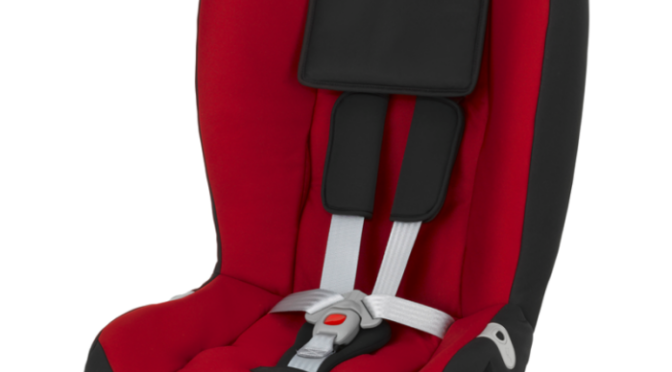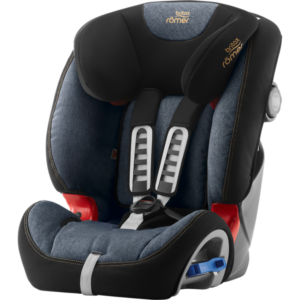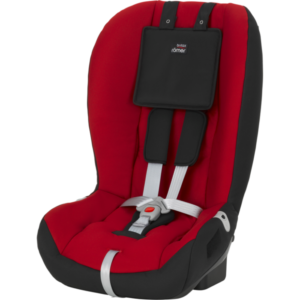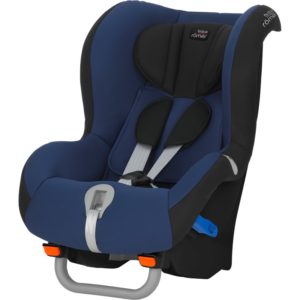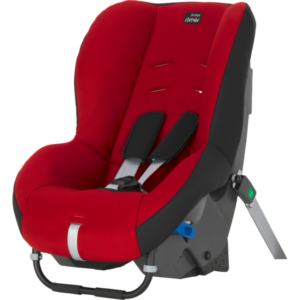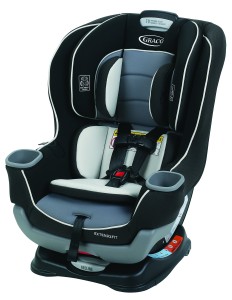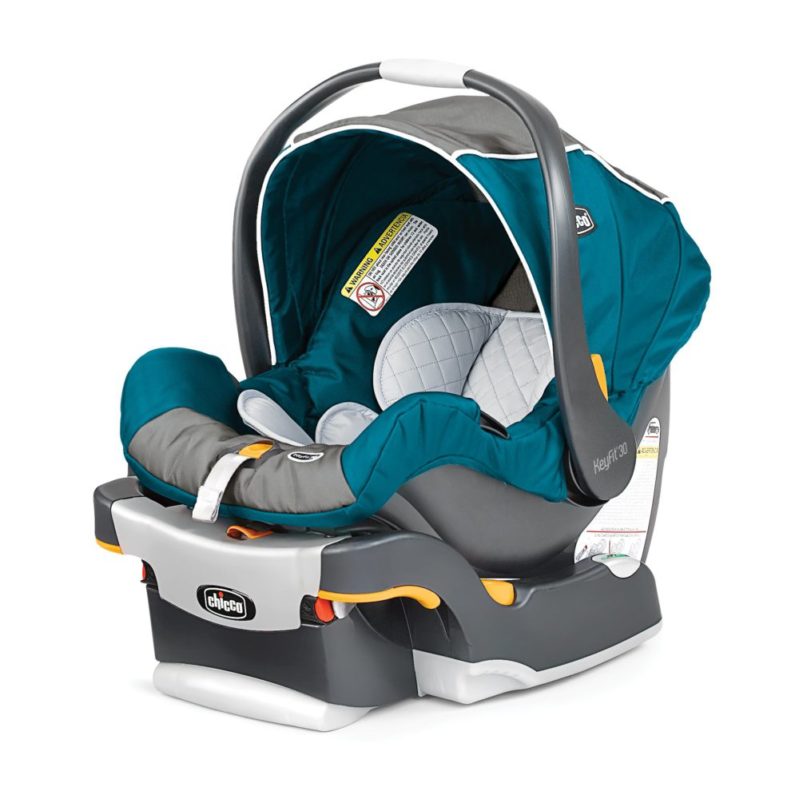
One of the most tricky parts of keeping kids safe is knowing what best practices are – then following them. I’ve reviewed what best practices look like for rear-facing, forward-facing, and boostering–best practices largely based on Swedish norms, which have been the best in the world for decades and continue to be. However, it’s also helpful to know what the rules and regulations are across the United States. Unfortunately, none of them come close to Swedish best practices, but knowing how far individual states are from what’s best for keeping kids safe gives you knowledge of where to advocate next, whether with friends and family or at the local, state, or national levels if you’re so inclined. Today we’re not simply going to recite chapter and verse of whatever laws are on the books; that’s information you can find easily, but without context, it’s just numbers. The fun part comes when we compare what each state requires with what we’d see if each state followed the policies that lead to the best outcomes for kids overseas. Ready? Let’s go!
As a reminder, the core of car seat safety involves rear-facing. It’s the safest position available in every vehicle, statistically speaking, and the benefits of extended rear-facing extend from childhood through adulthood. I typically suggest keeping children rear-facing as long as possible (until 4 or 5 like the Swedes), followed by harnessing until they can safely use booster seats (until 5, 6, 7, or 8, like the Swedes), and then boostering until the 5 step test is passed (typically between 10, 11, and 12). Beyond that, I suggest keeping kids in the back seat until at least 13, and delaying teen solo driving until 18 if possible. And seat belts, of course, are required for life. The goal isn’t to move through seats as quickly as possible; it’s to keep kids as safe as possible whenever they’re in motor vehicles.
Alabama
- Rear-Facing: Until 1 or 20 pounds.
- Forward-Facing: Until 5 or 40 pounds.
- Boostering: Until 6.
- The rear-facing law is at least 3 years too short. The forward-facing law would be fine without the weight exemption. The boostering law is at least 4 years too short. And there’s a bizarre law that seat belts aren’t required once children reach 15 years of age. The correct answer, of course, is that seat belts or an equivalent restraint system are required for safety for any form of 4-wheeled travel, regardless of age.
Alaska
- Rear-Facing: Until 1 and 20 pounds.
- Forward-Facing: Until 5.
- Boostering: Until 8 or 57 inches and 65 pounds.
- The rear-facing law is at least 3 years too short. The forward-facing law is fine. The boostering law is at least 2 years too short. The 57 inch requirement is sensible, but the way the law is written, the driver can override weight and height considerations once the child turns 8, which makes 8 the functional bottleneck.
Arizona
- Rear-Facing: N/A.
- Forward-Facing: N/A.
- Boostering: N/A.
- The state laws are bizarre. They don’t specifically mandate rear-facing, forward-facing, or booster use, but state that children who are under 8 and not more than 57 inches must use child restraint systems. Additionally, you don’t need to use such restraints (and can presumably use seat belts) if you transport multiple children, have at least one properly restrained, and decide that there isn’t room to properly restrain the rest. Needless to say, there is little here to admire in a discussion of best practices.
Arkansas
- Rear-Facing: N/A.
- Forward-Facing: N/A.
- Boostering: Until 6 and 60 pounds.
- The state laws are bizarre. Again, rear-facing and forward-facing are not explicitly required, but simply child restrained systems for those under 6. Seat belts do not appear to be required after age 15. Again, there is little to admire here in a discussion of best practices. The implied booster limit is at least 4 years too short, and there are no guidelines whatsoever to encourage rear-facing.
California
- Rear-Facing: Until 2 or 40 pounds or 40 inches.
- Forward-Facing: N/A.
- Boostering: Until 8 or 57 inches.
- The rear-facing law is at least 2 years too short. There is a requirement that children under 8 sit in the back, but no requirement to forward-face until at least 5 if parents aren’t willing to rear-face until then. The booster limit is at least 2 years too short.
Colorado
- Rear-Facing: Until 1 and 20 pounds.
- Forward-Facing: Until 4 and 40 pounds.
- Boostering: Until 8.
- The rear-facing law is at least 3 years too short. The forward-facing law is a year too short. The boostering law is at least 2 years too short. It includes wording about part of the 5-step test, but not all of the language, and it also allows children to be restrained by lap belts, which are absolutely not enough for safe transportation.
Connecticut
- Rear-Facing: Until 2 or 30 pounds.
- Forward-Facing: Until 5 or 50 pounds.
- Boostering: Until 8 or 60 pounds.
- The rear-facing law is at least 2 years too short. The forward-facing law would be fine without the weight exemption. The booster law is at least 2 years too short.
Delaware
- Rear-Facing: N/A.
- Forward-Facing: N/A.
- Boostering: Until 8 or 65 pounds.
- The state laws are bizarre. As in other states, there are no explicit requirements to rear-face or forward-face. The booster law is at least 2 years too short, and again, seat belts do not seem to be required once children reach 16.
Florida
- Rear-Facing: N/A.
- Forward-Facing: Until 4?
- Boostering: Until 6.
- Here’s another state with bizarre laws. It doesn’t seem to matter what your child is doing as long as she’s in some kind of car seat until 4, at which point you can switch to a booster. The booster law is at least 4 years too short, and the law actually states children 6 and above must use seat belts. Of course, you can most likely continue to use boosters (or forward-face or even rear-face with the right seats).
Georgia
- Rear-Facing: N/A.
- Forward-Facing: N/A.
- Boostering: Until 8 or 57 inches.
- Here’s another state that doesn’t require rear- or forward-facing but simply says you’re good to go, seat-belt wise, once your child hits 8 or 57 inches. Additionally, once kids turn 9, they can ride in the front seat (another bad idea).
Hawaii
- Rear-Facing: N/A.
- Forward-Facing: Until 4?
- Boostering: Until 8, 40 pounds, or 57 inches.
- Another state, another set of poor, poor laws. There are no guides for rear-facing, the forward-facing law is implied simply due to the fact that kids between 4 and 8 can use boosters, suggesting kids under 4 cannot, and the booster law ends 2 years too soon with an absurdly low weight exception that would allow many 4-year olds to use seat belts.
Idaho
- Rear-Facing: N/A.
- Forward-Facing: N/A.
- Boostering: Until 7?
- These are the worst laws I’ve come across yet. Children under 7 must be restrained in child restraints, but the kinds of restraints are never discussed, nor are rear-facing, forward-facing, or boostering. The law additionally notes that restraints of any kind are optional if all available seat belts are being used as long as the child is placed somewhere in the back. Restraints are also optional if the child is being held to be nursed or cared for in any other immediate need. In other words, if you decide to feed your child while speeding down the highway, you are free to hold her.This is, quite frankly, insane, and the kind of practice found all over the poor parts of the world with devastating results. The law additionally notes that people can’t be charged with negligence for not restraining their children. Idaho is a backwards state when it comes to child car safety.
Illinois
- Rear-Facing: Until 2 or 40 pounds or 40 inches.
- Forward-Facing: N/A.
- Boostering: Until 8.
- The rear-facing law is at least 2 years too short, there isn’t a forward-facing law, and the boostering law is at least 2 years too short. That said, the laws are far better than those in Idaho.
Indiana
- Rear-Facing: N/A.
- Forward-Facing: N/A.
- Boostering: Until 8.
- Another state with bizarrely unclear laws. There’s no guide to rear- or forward-facing, and the implied booster limit is at least 2 years too short. The law also implies that seat belts are optional once children turn 17.
Iowa
- Rear-Facing: Until 1 and 20 pounds.
- Forward-Facing: N/A.
- Boostering: Until 6.
- The rear-facing law is at least 3 years too short, there isn’t a forward-facing law, and the booster law is at least 4 years too short. Overall, as has been the case with every state so far, Iowa remains far away from best practices.
Kansas
- Rear-Facing: N/A.
- Forward-Facing: N/A.
- Boostering: Until 8 and 80 pounds or 57 inches.
- Here’s another state with obtuse laws. The only clear limit appears to be a requirement to use something besides a seat belt until a child turns 8 and reaches certain height and weight limits. The age limit is still at least 2 years too early, and again, there’s no guidance on how long to rear- or forward-face.
Kentucky
- Rear-Facing: N/A.
- Forward-Facing: Until more than 40 inches tall.
- Boostering: Until 8 and 57 inches tall.
- The law is, as we’ve seen repeatedly in this survey, vague. There is no guide to rear-facing and only a height limit to curtail booster use. The booster limit itself is at least 2 years too early, even though at 57 inches, most children would have the height to sit safely. Height, however, does not automatically bring maturity. And the laws as written are immature.
Louisiana
- Rear-Facing: Until 2.
- Forward-Facing: Until 4.
- Boostering: Until 9 and the 5-step test is passed.
- Louisiana currently has the best car seat laws in the country. Rear-facing is still 2 years to short and I’d like to see a year more for forward-facing (because while 4-year olds can sit safely in boosters, they need to be taught very explicitly to do so, and waiting until 5 will be easier for many US parents), but the booster law, while a year shorter than I’d like to see, is the first that explicitly walks parents through (most of) the 5-step test for readiness, which is textbook best practices. The law also states to choose the more protective category if a child can fit in multiple categories, as well as that children must be transported in the back seats when under 13. Go Luisiana! The laws aren’t perfect, but they’re better than any I’ve seen so far.
Maine
- Rear-Facing: Until 2.
- Forward-Facing: Until 55 pounds.
- Boostering: Until 8 and 80 pounds and 57 inches.
- Maine’s rear-facing law is 2 years too short, but I like their 55 pound forward-facing restriction, as that’ll carry children well into 5 years of age, if not further. The booster law is 2 years too short but when combined with the height and weight limits is better than most in the country. I also like the inclusion of the requirement to seat children under 12 and 100 pounds in the back seats, although raising the requirement to 13 would be better.
Maryland
- Rear-Facing: N/A.
- Forward-Facing: N/A.
- Boostering: Until 8 or 57 inches.
- Maryland joins an unhealthy number of states with near-nonexistant guidance regarding rear-facing or forward-facing, and simply tells parents to put their kids in something until they’re 8. This, once again, is bum practice, not best practice.
Massachusetts
- Rear-Facing: N/A.
- Forward-Facing: N/A.
- Boostering: Until 8 or 57 inches.
- Massachusetts takes after Maryland with next-to-no guidance for parents interested in basic (never mind best) practice.
Michigan
- Rear-Facing: N/A.
- Forward-Facing: Under 4?
- Boostering: Under 9 and under 57 inches.
- Michigan’s laws on car seat safety continue the trend of laws that leave much to the imagination and much to be improved. There’s no rear-facing guideline, the forward-facing guideline can only be inferred from the boostering guideline, and the booster guideline ends a year too early while lacking any mention of the 5-step test.
Minnesota
- Rear-Facing: N/A.
- Forward-Facing: N/A.
- Boostering: Until 8 or 57 inches.
- Minnesota’s laws are as bad as those in most parts of the US, but to their credit, they explicitly note that they are only providing a minimum standard of safety and have nothing to do with best practices. I suppose it’s good that they at least made this obvious to parents.
Mississippi
- Rear-Facing: N/A.
- Forward-Facing: Under 4?
- Boostering: Under 7 and under 65 pounds or 57 inches.
- Another state, another bad set of laws. The boostering law, which is the only law explicitly declared, ends 3 years too early.
Missouri
- Rear-Facing: N/A.
- Forward-Facing: Under 40 pounds?
- Boostering: Under 8 and under 80 pounds and 57 inches.
- Missouri’s laws are rather wordy but still don’t say much when it comes to best practices. A positive is the requirement for children below 40 pounds, regardless of age, to use a harnessed seat. Cons include the lack of guidance toward rear- and forward-facing as well as the booster limits that end 2 years too soon.
Montana
- Rear-Facing: N/A.
- Forward-Facing: N/A.
- Boostering: Under 6 and 60 pounds.
- Montanta’s wording is sparse but gets the point across: we don’t care about best practices. Your only restraint requirements end at 6 years and 60 pounds, which is 4 years too early to end boostering.
Nebraska
- Rear-Facing: Until 2,
- Forward-Facing: N/A.
- Boostering: Until 8.
- Nebraska beats Michigan by having one of the best rear-facing rules in the nation (until 2), but it still falls at least 2 years behind best practices. Nothing is mentioned for forward-facing, and the booster law ends 2 years too soon.
Nevada
- Rear-Facing: N/A.
- Forward-Facing: N/A.
- Boostering: Under 6 and 60 pounds.
- Nevada channels Montanta with next-to-no guidance and next-to-no attention to best practices. Again, the booster law ends 4 years too soon.
New Hampshire
- Rear-Facing: N/A.
- Forward-Facing: N/A.
- Boostering: Under 7 years or 57 inches.
- New Hampshire joins the worst of the worst states with next-to-no laws on the books aside from a catch-all put them in something law that ends 3 years too soon for boostered children.
New Jersey
- Rear-Facing: Until 2 and 30 pounds.
- Forward-Facing: Until 4 and 40 pounds.
- Boostering: Until 8 and 57 inches.
- New Jersey’s laws are among the best in the nation in that they provide specific guidelines for rear-, forward-facing, and boostering. That said, the rear guidelines end 2 years too soon, the forward guidelines end a year sooner than I’d like, and the booster laws end 2 years too soon. That said, we’d be better off if every state’s laws looked at least like New Jersey’s.
New Mexico
- Rear-Facing: Until 1.
- Forward-Facing: Until 5 or 40 pounds.
- Boostering: Until the 5-step test is passed.
- New Mexico’s rear-facing rule ends 3 years too soon. Their forward-facing law has a good year limit but far too low of a weight limit, as it could allow 40-pound 3 year olds to move into boosters, which isn’t safe under any circumstances. However, the booster limit is right in line with best practices, as it mandates booster use until the 5-step test is passed.
New York
- Rear-Facing: Until 2.
- Forward-Facing: N/A.
- Boostering: Under 8.
- New York’s laws are wordy but confusing. The core points are to rear-face until 2, which is still 2 years too short, and to booster until 8, which is also 2 years too short.
North Carolina
- Rear-Facing: N/A.
- Forward-Facing: N/A.
- Boostering: Until 8 and 80 pounds.
- North Carolina’s laws are brief and, as is the case in most states, next to useless. The one positive note is the booster requirement until 8 and 80 pounds, although it’s still 2 years too early with no mention of the 5-step test.
North Dakota
- Rear-Facing: N/A.
- Forward-Facing: Until 4 or 40 pounds.
- Boostering: Until 8 and 57 inches.
- North Dakota’s standards are as poor as those in most states; there’s no rear-facing requirement, the forward-facing requirement is only implied and is nullified by the 40 pound exclusion, and the booster limit is 2 years too early. There’s also the ditty about how children only need proper restraints until 15.
Ohio
- Rear-Facing: Until 2.
- Forward-Facing: Until 4.
- Boostering: Until 8 or 57 inches.
- Ohio receives some credit for requiring rear-facing until 2, although that’s still 2 years too short, but all credit can be removed by their inclusion of the exclusion that children can be forward-faced once they outgrow their seats by weight or height (whichever comes first). This naturally defeats the purpose of the initial requirement, as a parent bent on forward-facing could do so in most infant seats before 1 by simply following height restrictions. I mention this here not to particularly shame Ohio’s lawmakers, but to point out again how these laws are poorly written in just about every state, as dozens of states have similar exclusions in their rear-facing guidelines. If you want a child to rear-face until 2, you make that the law and additionally stipulate that parents must seek seats capable of reaching this requirement. You can provide links to suitable seats or similar resources for parents who need help finding or affording such seats. You don’t simply allow parents to opt out by telling them “we don’t mean it once your child outgrows her first infant seat wink wink.”Oh, and the forward-facing law is a year too short and is only implied. The boostering law is 2 years too short. If you read prior state laws, you knew this already.
Oklahoma
- Rear-Facing: Until 2.
- Forward-Facing: N/A.
- Boostering: Until 8 or 57 inches.
- Oklahoma uses the same “rear-face until 2 or you decide your seat doesn’t fit tee-hee” approach as Ohio and too many other states. Even without the neutering exclusion, kids there would still fall 2 years short of best practices. There are no guidelines for forward-facing and the booster requirement is the standard 2-year too short one found in many states.
Oregon
- Rear-Facing: Until 2 and 20 pounds.
- Forward-Facing: Until 40 pounds.
- Boostering: Until 8 or 57 inches.
- Oregon doesn’t rear-face long enough by 2 years, but at least requires the first 2 years. The forward-facing law is too short, as is the booster law (by 2 years).
Pennsylvania
- Rear-Facing: Until 2.
- Forward-Facing: Until 4.
- Boostering: Until 8.
- Pennsylvania’s laws have a lot of words but, as we’ve seen repeatedly in this survey with other wordy states, don’t actually say much. The bottom line is that rear-facing is only required for half as long as would be optimal from a best practices standpoint, forward-facing is implied for 4 years instead of for 5, and boostering can be ended 2 years too soon.
Rhode Island
- Rear-Facing: Until 2 or 30 pounds.
- Forward-Facing: Until outgrown.
- Boostering: Until 8 or 80 pounds or 57 inches.
- Rhode Island requires rear-facing until 2 (2 years too short), forward-facing until seats are outgrown (good, but a requirement until 5 would be best), and boostering until 8, which is (as almost always) 2 years too soon.
South Carolina
- Rear-Facing: Until 2.
- Forward-Facing: Until outgrown or 4.
- Boostering: Until 8 and 57 inches tall with the 5-step test.
- South Carolina does better than most states. They don’t rear-face long enough (2 years too short), forward-face long enough, or booster long enough, but do require the 5-step test (for the most part) be passed before children can use adult seat belts.
South Dakota
- Rear-Facing: N/A.
- Forward-Facing: N/A.
- Boostering: Until 5 or 40 pounds.
- You’ve got a friend, Idaho! Welcome to the second-worst laws in the nation, courtesy of South Dakota. Here, you only need to restrain your child in a car seat (which may be a booster) until she turns 5. However, even that bizarre requirement can be waived once your child tips the scales at 40 pounds. From that point on, she’s good to go in a seat belt just like a full-fledged adult!Needless to say, these are terrible laws. That said, Idaho still gives them a run for their money by encouraging you to feed your unrestrained child. I think they’re still the worst I’ve found.
Tennessee
- Rear-Facing: Until 1 and 20 pounds.
- Forward-Facing: Until 3.
- Boostering: Until 8 or 57 inches.
- Tennessee’s laws are typically bad, but as we’ve seen, have no dearth of company. The rear-facing laws are too short by 3 years, the forward-facing ones by 2, and the booster laws by 2, although the 5-step test is the ultimate authority there.
Texas
- Rear-Facing: N/A.
- Forward-Facing: N/A.
- Boostering: Until 8 or 57 inches.
- Texas’ laws are nothing to write home about; the only actual guideline they seem to have is the standard one about boostering, which ends 2 years too early and lacks the 5-step test. You’re on your own for rear- or forward-facing.
Utah
- Rear-Facing: N/A.
- Forward-Facing: N/A.
- Boostering: Until 8 or 57 inches.
- It becomes obvious how many of these states simply copied each others’ laws without adding any thought or consultation to their improvement. Utah does what Texas and half of the other states do, which is next to nothing.
Vermont
- Rear-Facing: Until 1 or 20 pounds.
- Forward-Facing: N/A.
- Boostering: Until 8.
- Vermont’s laws are far too short for rear-facing safely (4 years too short), say nothing about forward-facing, and say next to nothing about boostering (and are 2 years too short). Next!
Virginia
- Rear-Facing: Until 2.
- Forward-Facing: N/A.
- Boostering: Until 8.
- Virginia requires rear-facing until 2 while, as is often the case, giving parents the ol’ weight/height exclusion. They don’t mention forward-facing and do tell you to booster until 8. They also note that you can’t throw kids in the cargo area without restraining them. Progress, I suppose.
Washington
- Rear-Facing: Until 2.
- Forward-Facing: Until 4.
- Boostering: Until 57 inches and encouraged until 5-step test is passed.
- Washington has some of the better rules on the books as of 2020; they require rear-facing until 2 (2 years too soon), forward-facing until 4 (1 year too soon), and boostering until 57 inches with encouragement to continue to do so until the 5-step test is passed. They also encourage rear-facing past 2 although they allow the weight/height escape clauses. And unlike most states, require transporting kids under 13 in the back, although they allow an escape clause if it is not “practical.”
West Virginia
- Rear-Facing: N/A.
- Forward-Facing: N/A.
- Boostering: Until 8 and 57 inches.
- West Virginia uses the same basic copy-pasted, lowest-bidder legislation found in dozens of other states. Ignore it and do better (as is the case throughout this article, without exception).
Wisconsin
- Rear-Facing: Until 1 and 20 pounds.
- Forward-Facing: Until 4.
- Boostering: N/A?
- The Wisconsin law is both bad and confusing. The rear-facing law is bad, the forward-facing law is better, although 1 year too short, but the boostering law goes from urging booster use for kids under 8 who weigh at least 80 pounds and are under 57 inches tall to stating that kids under 8 can also just use seat belts. Perhaps it’s a riddle, or just an extremely poorly-written law. In either case, it still wouldn’t be best practices. Booster until the 5-step test is passed. This typically isn’t until 10-12. End of story.
Wyoming
- Rear-Facing: N/A.
- Forward-Facing: N/A.
- Boostering: Until 8 or younger?
- Wyoming’s law is bad, but as you’ve seen above, it has company. They briefly mention not placing rear-facing infants in front of airbags, but don’t mention if you’re supposed to rear-face at all, and if so, for how long. There’s a similar dearth of information on forward-facing and boostering, although we can assume the need to booster ends at 8 since they provide information encouraging seat belt use at 8 or younger provided that the belt fits properly. From reading the CCD, you know the belt’s not going to fit properly, so they’re essentially giving useless advice at best and bad advice at worst, as very few parents interested in seat belting their 7 or 6 or 5 or 4 year olds will stop and buy a car seat instead after deciding the belt didn’t fit properly. This is a bad law, and it’s a fitting end to a country full of them.
The United States is full of bad laws related to car seat safety
As you can see, the state of car seat legislation in the United States in 2020 is enough to make your head hurt. This isn’t Sweden. If you want best practices, you’ll need to learn them and enforce them yourself. Keep your family safe. Encourage your friends and family to do the same. Don’t follow state guidelines, because they’re not based on the rules that keep far more kids alive in Sweden and Norway when seconds away from a serious crash than the rules we’ve written up here.
 If you find my information on best practices in car and car seat safety helpful, you can buy my books here or do your shopping through this Amazon link. Canadians can shop here for Canadian purchases. It costs nothing extra to do so, but when you shop through my links, a small portion of your purchase, regardless of what you buy, will go toward the maintenance of The Car Crash Detective.
If you find my information on best practices in car and car seat safety helpful, you can buy my books here or do your shopping through this Amazon link. Canadians can shop here for Canadian purchases. It costs nothing extra to do so, but when you shop through my links, a small portion of your purchase, regardless of what you buy, will go toward the maintenance of The Car Crash Detective.









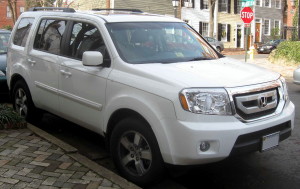


 No, it isn’t. The sole advantage of 4WD is, when paired with suitable tires, an increased ability to extricate the vehicle from low-traction situations. This means an improved ability to get moving in mud, slush, snow, and similar wet/dry situations. 4WD will not help you stop any sooner than 2WD in a vehicle matched by road conditions, speed, mass, tire size and tread, and brake quality. Every 4-wheeled vehicle on the road already has 4-wheel braking, and ABS will already do more to stop you than you ever could. Similarly, 4WD will not help you steer; every 4-wheeled vehicle already has 2-wheel steering, and ESC will do more to keep you heading in your intended direction than anything you could ever imagine; that’s what makes it life-saving technology.
No, it isn’t. The sole advantage of 4WD is, when paired with suitable tires, an increased ability to extricate the vehicle from low-traction situations. This means an improved ability to get moving in mud, slush, snow, and similar wet/dry situations. 4WD will not help you stop any sooner than 2WD in a vehicle matched by road conditions, speed, mass, tire size and tread, and brake quality. Every 4-wheeled vehicle on the road already has 4-wheel braking, and ABS will already do more to stop you than you ever could. Similarly, 4WD will not help you steer; every 4-wheeled vehicle already has 2-wheel steering, and ESC will do more to keep you heading in your intended direction than anything you could ever imagine; that’s what makes it life-saving technology.
